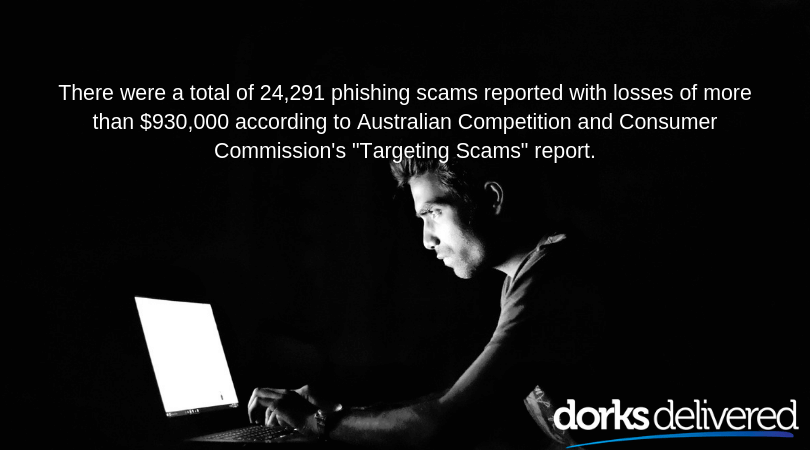How Can Your Business Bounce Back From Phishing Scams?
An Australian Competition and Consumer Commission (ACCC) report showed that phishing ranked among the top three scams in 2018. Business owners should be extra mindful of their IT security policies against this type of cyberattack. Companies in the banking, finance, and health care sectors likely need data security more than any other industry because the nature of their business makes them a gold mine of information for hackers.

A Complex Version of Phishing
The chances of recovering from a phishing attack or any other IT security incident are quite low for SMEs, due to a lack of funding for cybersecurity especially when it involves ‘spear phishing’. The Australian Cyber Security Centre (ACSC) said that this type of phishing doesn’t just target random Internet users. Instead, hackers go after individuals such as managers and people with direct access to the company IT network.
You might believe that it’s unlikely for trained professionals to fall for spear phishing, but online criminals have become creative with their schemes. Some of them use complex social engineering tactics to lure an unsuspecting individual to take action. It could be one of your employees who mistakenly clicks a link that asks for a password update, which seems to originate from a trusted source.
You May Also Like:
• 8 Most Common Types of Cyberattacks You Need to Know
• The Meaning of Cybersecurity Visibility
• 5 Common Cloud Computing Security Issues That Need Your Attention
What You Should Do After a Phishing Attack
If you suspect that your IT security has been compromised, the ACSC advises business owners to know the scope of their obligations for disclosing leaked information. Companies that handle the personally identifiable information of their clients must know when to report confirmed phishing scams.
You may be unable to recover confidential information when hackers integrate malware with a phishing scam. Some just break into a system to delete all of your sensitive data, so be sure to back up files regularly as a precaution. Don’t forget to report the incident to the proper authorities such as Office of the Australian Information Commissioner and the Office of the eSafety Commissioner.
What You Can Do to Avoid Phishing
The costs of IT security will be a worthwhile expense only when you invest in your employees. Your workers represent the first line of defence against any type of cyber attack. Even if you have the latest tools to combat threats or conduct a routine IT audit to find and fix loopholes in your security system, human error can negate these efforts.
Business owners must always reiterate the importance of not clicking suspicious links in emails from unknown senders. Make sure your organisation has regular infosec training. To help protect your employees from spam, add an email filter to your information security system. Simple steps like blocking deceptive messages from reaching your people can go a long way.
The Final Word
Most SMEs in Australia remain unprepared for the impact of phishing scams and other cyber-attacks, which makes them an easy target for online criminals. However, there are certain ways to recover from a phishing attack that doesn’t require a lot of money. To start, have your employees undergo proper IT security training and schedule an IT audit to check for vulnerabilities in your networks.
Contact a CHB Leader in Managed IT Support to learn more about IT outsourcing and other IT security solutions for your business.
Do you want to receive quality content about technology, business growth, life and mental health every week?
[module-377]





























